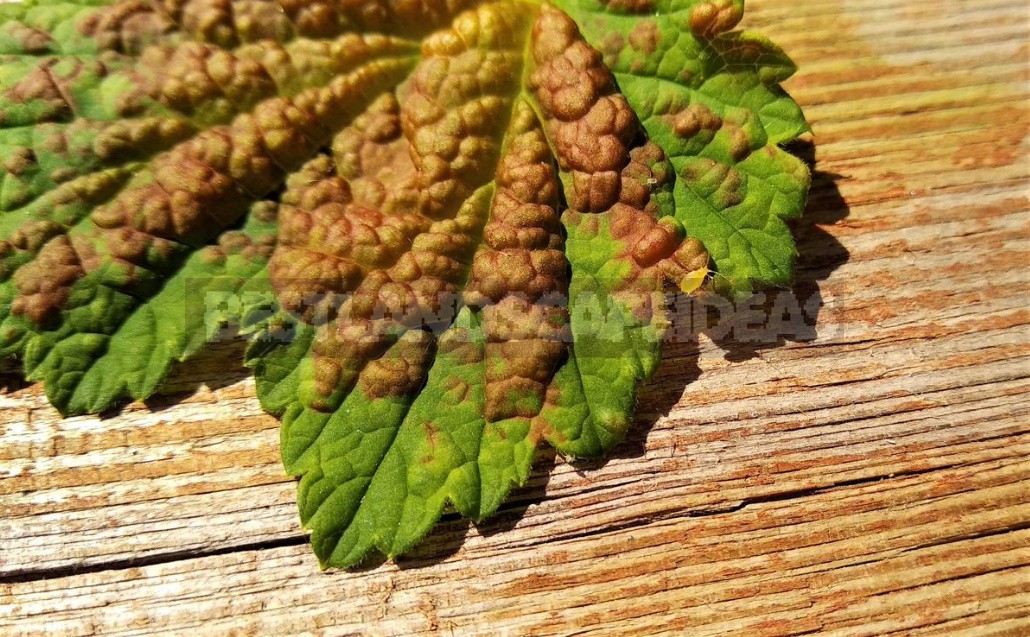
It is difficult to find a dacha plot where currants do not grow: this berry is held in high esteem by all gardeners. Yes, and how not to love this culture, if it is so responsive to the efforts of its owner and always responds to him in return — thanks for the care of a generous harvest of delicious and useful berries! However, there is a sworn enemy of lovers who pulls all the forces out of the Bush and torments the cottager. We are talking, of course, about aphids — this pest can safely be called the most nimble and dirty.
The parasite so exhausts the Bush that you can only dream of a decent harvest. Aphis grossulariae attacks all varieties of berry (primarily Ribes nigrum), and Ribes rúbrum and Ribes niveum get doubly: Cryptomyzus ribis is also not indifferent to them. Themselves to resist the invaders of the plants are not, so they just have to hope for the assistance of a gardener. But since the oath “for better or for worse” is given, you will have to roll up your sleeves and rescue your favorite currant from the captivity of the invaders, since there are many means to combat this pest.
Signs of defeat
If you are also faced with such a task, you should first study the habits and characteristics of the enemy. What kind of aphid bothers your currant? Do you confuse it with other pests? Or maybe you don’t even know that your pet needs urgent help yet?

Gooseberry aphid
The twisted tops of currant shoots are nothing more than signs of APHIS grossulariae lesions. If you examine the young growth and the reverse side of the deformed leaf plates, you can see a lot of small green or yellowish-green bugs about 2 mm long, endowed with a broad-oval body and a pair of antennae.
Insects suck the juices from the tissues of the plant, which is why the shoots stop developing, the leaves shrivel, and after a while they dry up and fall off. The most suitable for gooseberry aphids is the tender foliage and young shoots of the berry, so it usually settles on the tops of branches, quickly turning them into tangles of dead tissue.
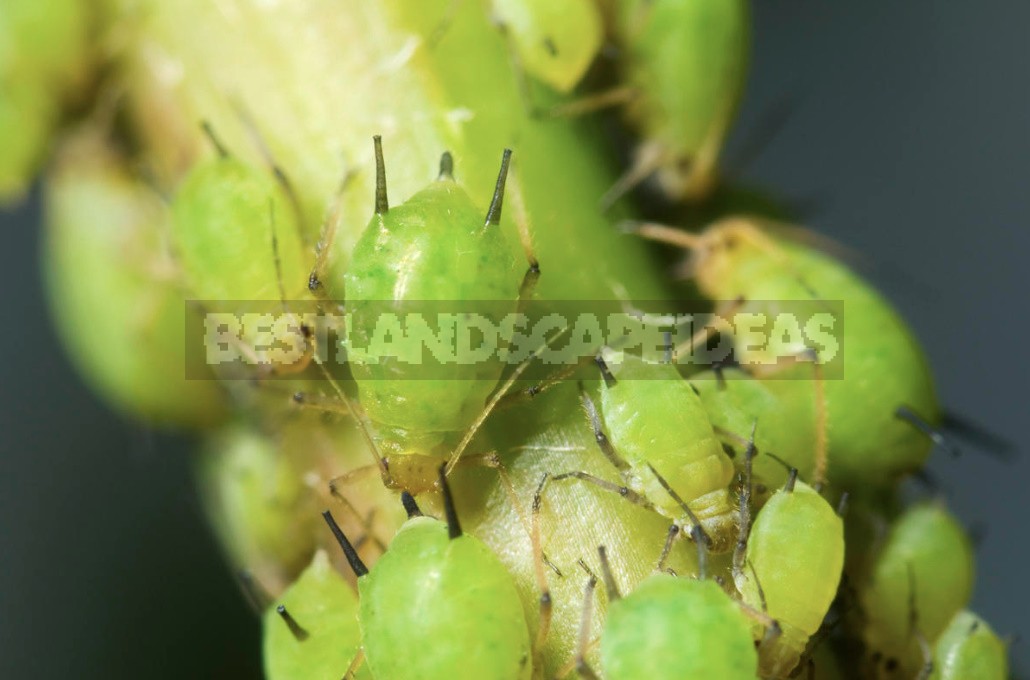
Cryptomyzus ribis
Cryptomyzus ribis is difficult to distinguish from gooseberries: these pests are very similar in appearance. This type of aphid also prefers to settle on the back of young leaves, so it is not always detected in time and has time to cause significant damage to plants.
An experienced gardener will always calculate the presence of a hidden enemy on the shrub by the wrinkled swellings on the leaves (primarily apical), which gradually change their hue from pale green to red. An inexperienced cottager often takes this for a disease or errors in the plant’s diet.

The damage from both types of aphids is huge. With mass reproduction, the pest is able to weaken the adult currant Bush so much during the season that it will not be able to overwinter. If the shrub and manages to stay alive until next spring, then a decent harvest from such a low-income person is not worth waiting for. Not only does aphids undermine the strength of plants with their insatiable appetite, but they often infect them with viral infections that can no longer be cured.
Prevention
To prevent this turn of events, you need to pay attention to the currant not when it has already begged for help, but long before the enemy appears. To prevent the invasion of invaders on the site, first of all, cleanliness will help: the first target of aphids are berry bushes growing surrounded by weeds. Therefore, regularly remove all excess vegetation in the garden, so that the pest does not move from it to the currant.
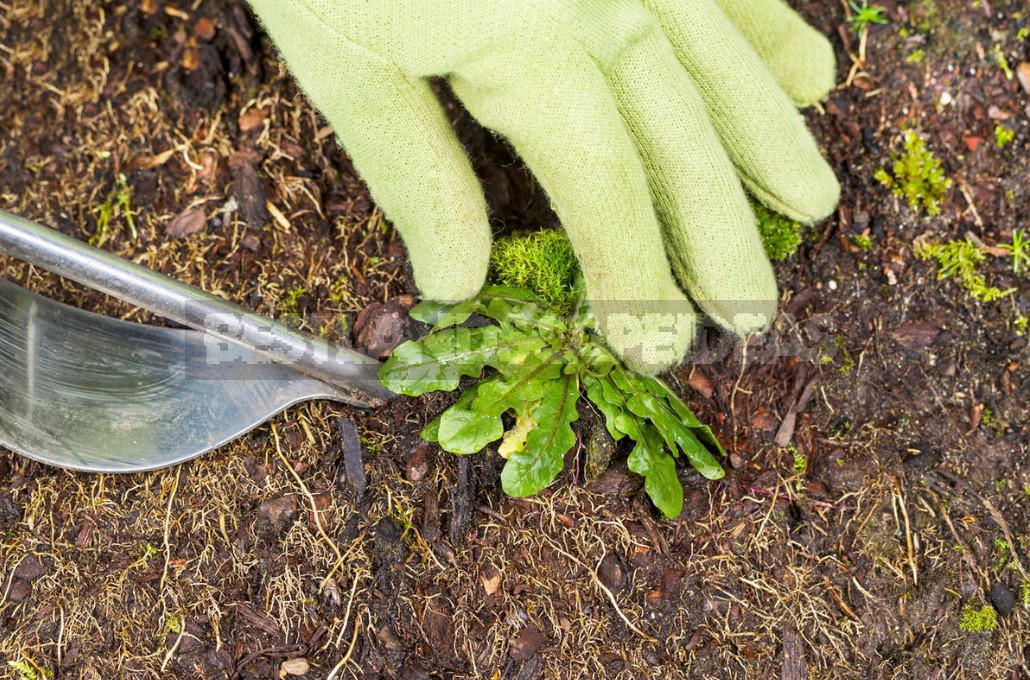
It is important to keep the bushes themselves clean, which is easy to achieve with the help of annual sanitary and formative pruning. Thickened plants that are poorly illuminated by the sun, dry out for a long time after precipitation and are not well ventilated, create conditions for comfortable living and intensive reproduction of aphids.
After removing a batch of weeds in the spring, loosen the soil around the currant and plant annual crops that will scare away pests from the bushes with their aroma: calendula, nasturtium, marigolds, dill, parsley, coriander, Basil, anise, etc. This task is also well handled by perennial repellent plants: Melissa and mint, Pyrethrum and Achillea millefolium, Agastache foeniculum and thyme, etc. If you notice Tanacetum vulgare and Artemisia absinthium among the weeds, leave these odorous plants: they will be no less useful than cultural repellents.

These fragrant defenders will perform another function — to attract ladybirds to the site, which have gained fame as the main opponents of aphids. The same service will be provided by Forficula auricularia, they eat aphids with a great appetite in the dark. To draw the attention of these insects to currants, keep the ground under shrubs in a moderately moist state and mulch their trunk circles with a thick layer of weeds or straw.
Special attention is paid to ants! With these nimble insects, you need to fight tirelessly, because they can bring aphids from a neighboring plot or from the forest and settle it on your currant.
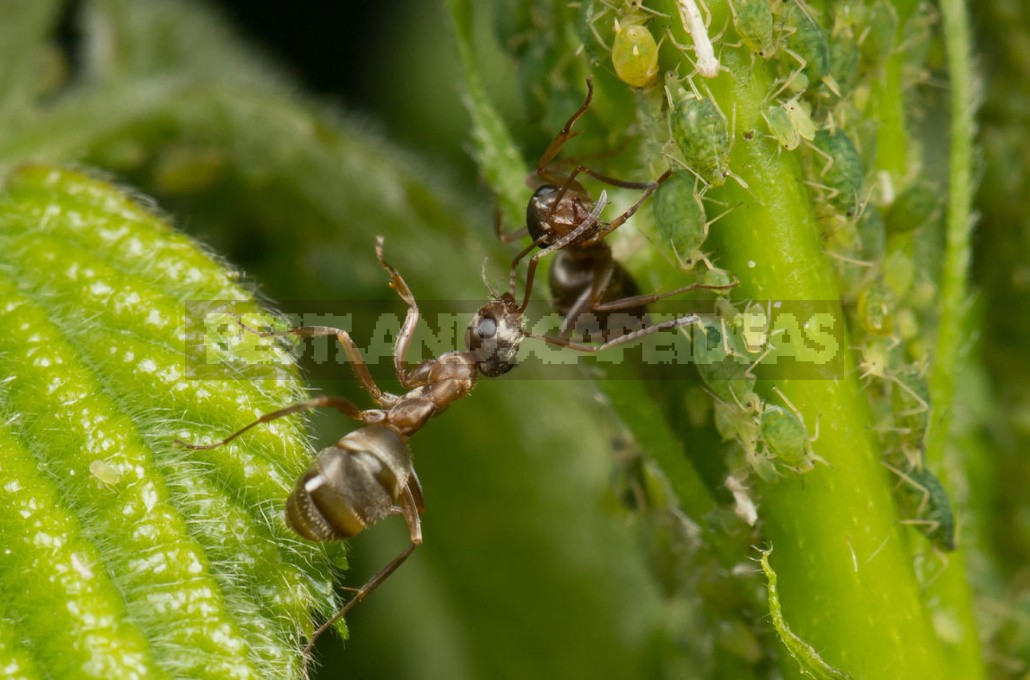
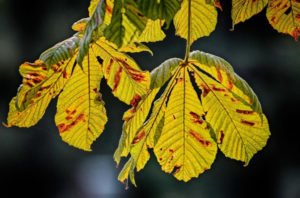


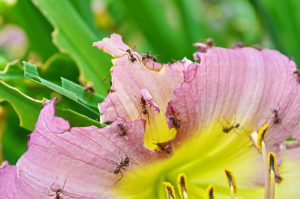
Leave a Reply